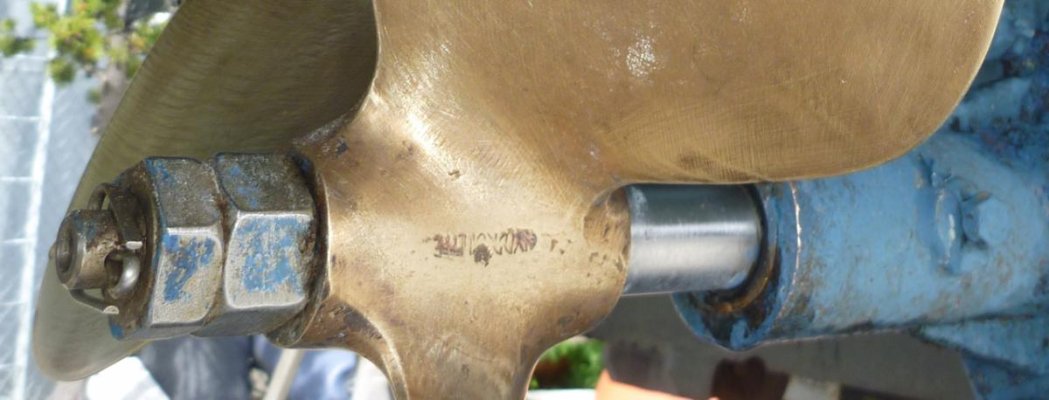It's not about torquing the nut off. It's about maintaining adequate stress on the hub to seat it on the shaft taper, particularly when powering astern. The key and keyways take up the torque.
FWIW. I have a castellated nut and cotter on mine because I use a bullet prop zinc. I also lapped and blued my shaft to hub fit.
If you are going to use lock wire, be sure to use the right tool, and maybe read up about proper orientation.
Here is a copy and paste of what I posted to the TandT list in 2010:
The thin nut goes on first…
I spent 11 years wrenching on submarines. When I reflect back, I am still amazed at the amount of useful technical training that the Navy provided me. One of my favourite technical manuals to this day is NavShipsTechManualChapter 75, Fasteners. Use it all the time.
To quote:
075-5.3.4 JAM NUTS (LOCK NUTS). Jam nuts are an older variation of the prevailing torque concept. They are not usually recommended for new installations due to the tendency to use an improper thickness for the jam nut and to install them in the wrong relative positions.
075-5.3.4.1 Jam Nut Assembly. The jam nut assembly requires a regular or main nut and a thin jam nut, as shown in Figure 075-5-5. The assembly is installed with the thinner nut between the thick nut and the bearing surface. The main nut has to be as thick as if no jam nut were being used, because the main nut carries all the working load. The jam nut is usually about 2/3 as thick as the main nut. If the jam nut is too thin, however, the threads in the jam nut area will be damaged as the main nut will pull the bolt threads partially through the jam nut. Conversely, if the jam nut is too thick, the main nut cannot distort the threads enough.
075-5.3.4.2 Tightening the Jam Nut. At assembly, first tighten the jam nut to the same or slightly less percentage of the preload torque specified for the main nut, based on the relation the jam nut thickness bears to the thickness of the main nut. Then hold it in position with a wrench while you tighten the main nut. For example, if the jam nut is 2/3 as thick as the nut, tighten the jam nut to 1/2 to 2/3 of the torque used for the main nut. Then, when the main nut. is tightened to the preload torque specified for the bolt, it stretches the bolt (stud), thereby tending to pull it through the jam nut. Any vibration or load that tends to loosen the bolted joint will allow the bolt to shrink back to its original length, leaving the jam nut tight against the main nut. This creates the necessary prevailing torque to prevent the jam or main nut assembly from rotating on the bolt.
Chapter 75 can be downloaded here:
www.hnsa.org/doc/nstm/ch075.pdf


